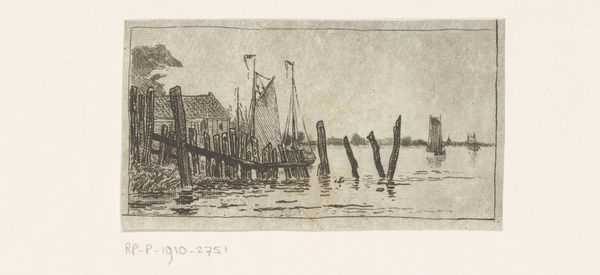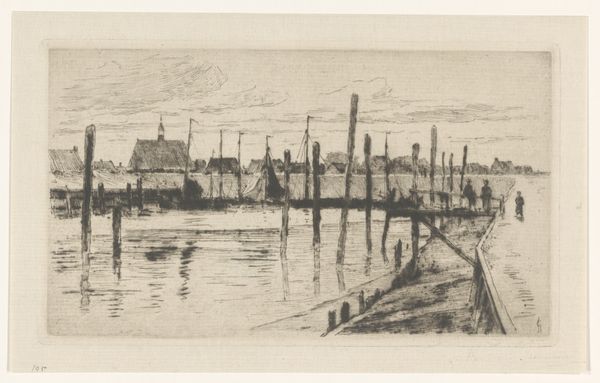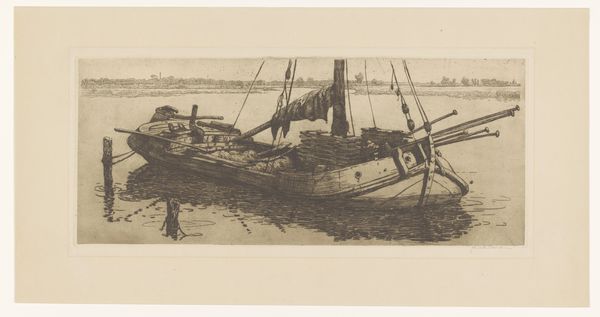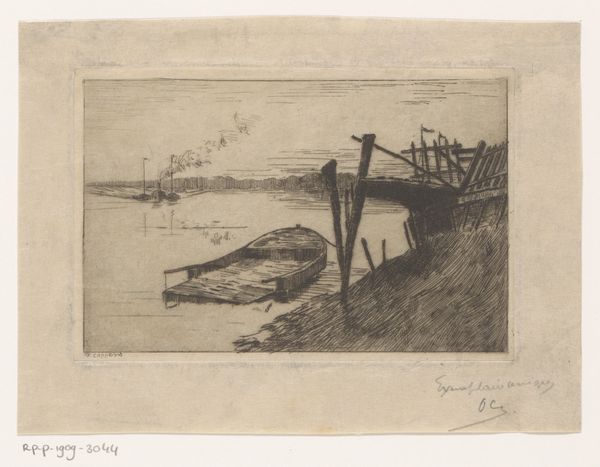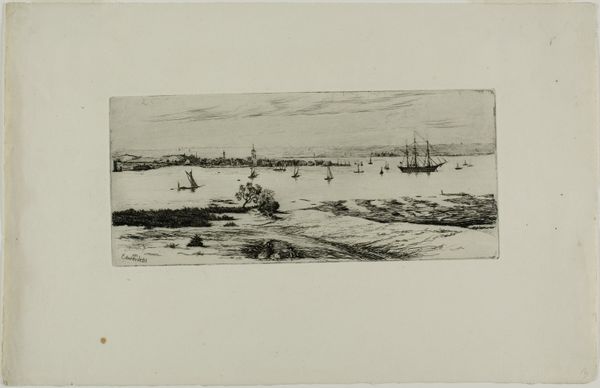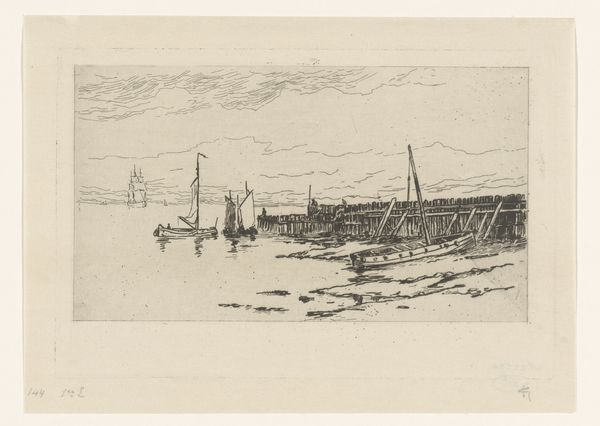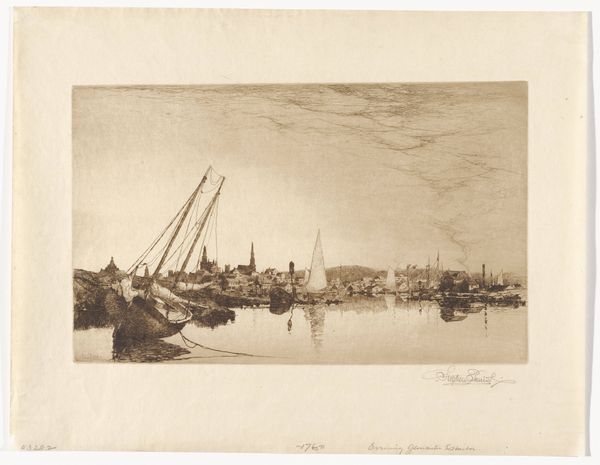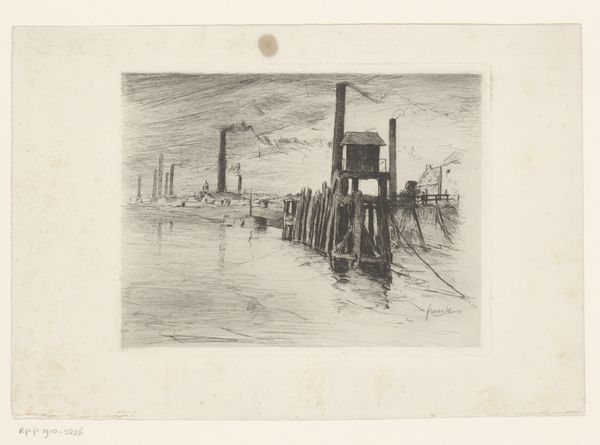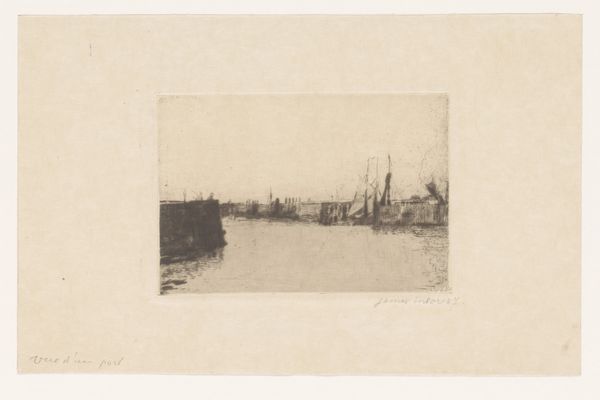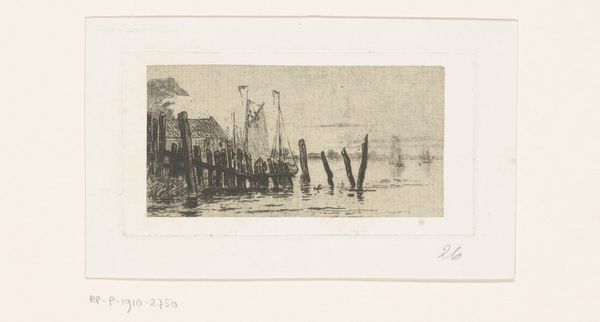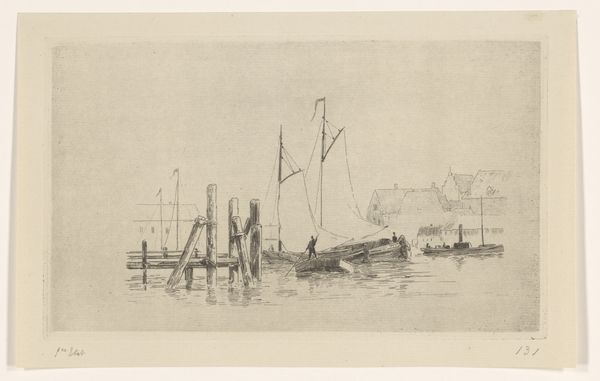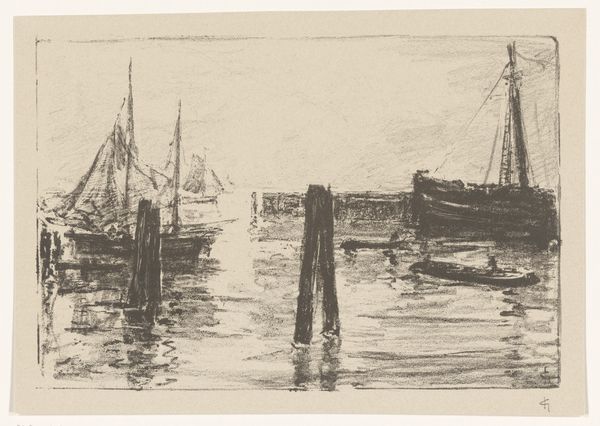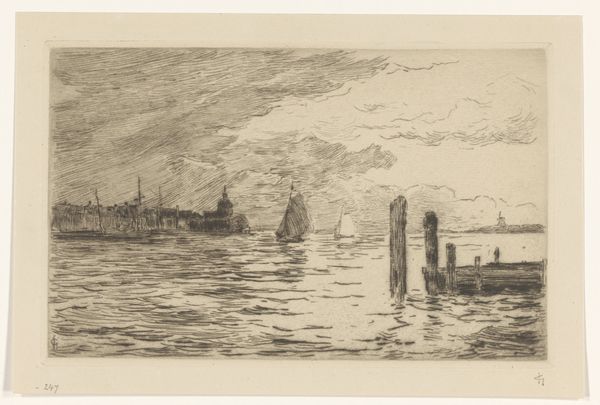
print, etching
# print
#
etching
#
landscape
#
realism
Dimensions: height 90 mm, width 143 mm
Copyright: Rijks Museum: Open Domain
Editor: This etching, “Burcht bij laag water,” created sometime between 1851 and 1910 by Carel Nicolaas Storm van 's-Gravesande, depicts a harbor scene. It feels very industrial, with all of the wood structures on the coast. What strikes you when you look at this print? Curator: The labor involved in constructing and maintaining that dock is really the first thing I notice. Look at the textures and lines; you can almost feel the rough-hewn timbers and the way they're fitted together. Editor: Yes, and how it directly abuts the sea – what are those darker marks there in the foreground? Curator: I think it suggests both the bounty and danger inherent in extracting resources from the sea. These resources would support entire economic systems, and therefore entire cultures! Note the contrast between the textured foreground of the docks and the comparatively smooth expanse of water – it is a juxtaposition of the handmade and the 'untamed' or 'raw' nature. Consider the amount of labor used, versus what nature can just *offer*. Editor: It makes me think about how dependent our lives still are on raw materials that require physical labor, even though we often don’t see it. The focus on method – and even marks of process – really encourages that kind of thinking. Curator: Exactly! And notice how this challenges our preconceptions about high art. It's not a grand historical painting, it's a meditation on the materials and the means of production in a specific locale. We are examining more than the scene; it gives us the *feeling* of its social and economic ecosystem. Editor: That's given me a lot to consider about how we value both labor and the resources we extract. I'll certainly think about that when looking at similar works going forward. Curator: And I'm intrigued by how close observation of process reveals a network connecting material, method, and society. It enriches our view of this harbor landscape immeasurably!
Comments
No comments
Be the first to comment and join the conversation on the ultimate creative platform.
